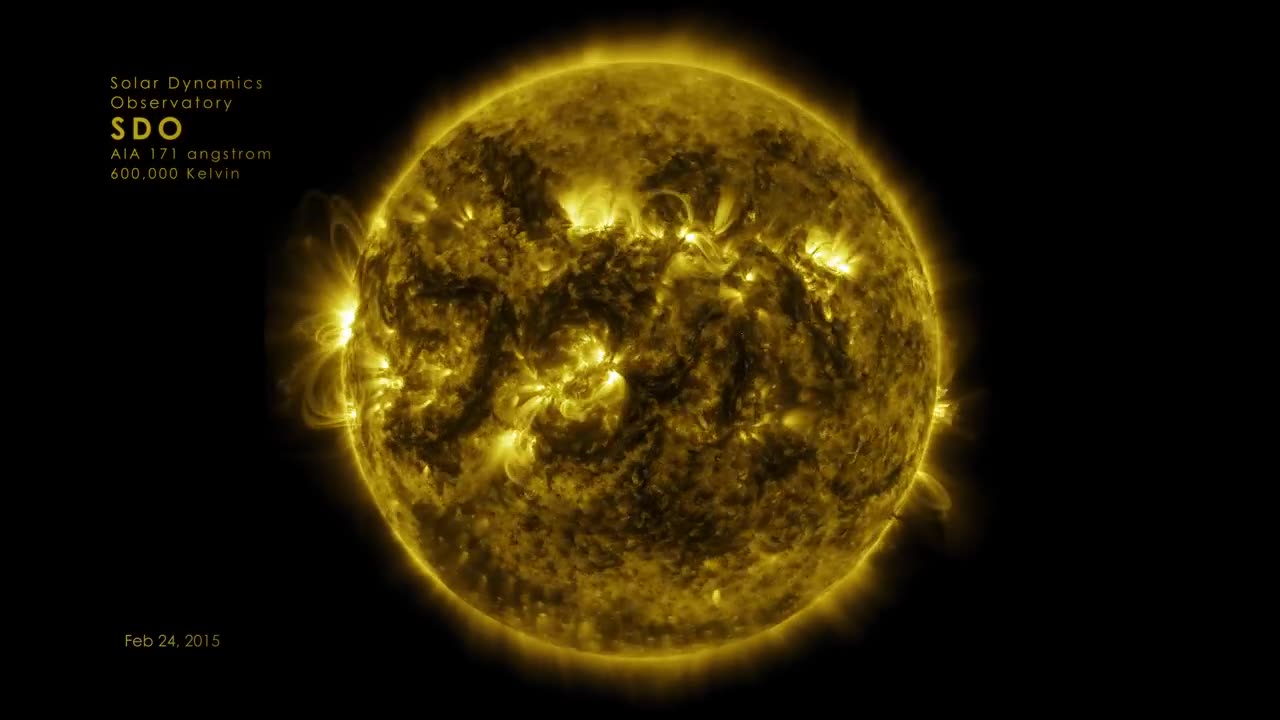Premium Only Content

SDO: Year 6 Ultra-HD
Witnessing the ever-evolving nature of the sun is an ongoing endeavor, diligently overseen by NASA's Solar Dynamics Observatory (SDO). Launched on February 11, 2010, this vigilant observer maintains a ceaseless watch over the sun's entire disk, affording a captivating front-row view of the graceful ballet of solar materials coursing through its atmosphere, the corona. SDO's sixth year of orbit, captured in this mesmerizing video, spans from January 1, 2015, to January 28, 2016, seamlessly woven into a singular time-lapse sequence.
Delivering the highest quality experience on YouTube, this video boasts an ultra-high definition resolution of 3840x2160 pixels at a smooth 29.97 frames per second. Each frame succinctly encapsulates a span of two hours. For those seeking a downloadable version, the frame rate escalates to 59.94 frames per second, with each frame artistically encapsulating the passage of a single hour.
The Atmospheric Imaging Assembly (AIA) of the SDO is the artistic brushstroke that captures the sun's portrait, deftly painting an image every 12 seconds across ten diverse wavelengths. The images presented here are artfully derived from the 171-angstrom wavelength, venturing into the realm of extreme ultraviolet light. This particular perspective unveils the sun's dynamic essence at temperatures hovering around 600,000 kelvins (approximately 1,079,540 degrees Fahrenheit). A symphony of rotations unfolds, accentuated by the sun's rhythmic 25-day pirouette, beautifully showcased within this wavelength.
As the cosmic dance unfolds, an almost imperceptible interplay of size variations graces the sun's presence. This intriguing phenomenon is an outcome of the ever-changing distance between the SDO spacecraft and the sun, resulting in a captivating yet consistently stable visual narrative. Astonishingly, despite hurtling through space at 6,876 miles per hour and with Earth racing around the sun at a breathtaking 67,062 miles per hour, the imagery remains steadfast.
Scientists intently scrutinize these captivating visuals, seeking to decipher the intricate electromagnetic orchestration that propels the sun's ceaseless choreography. Beyond this vital understanding, the implications ripple closer to Earth: the occasional flares and coronal mass ejections, a form of solar explosion, have the potential to disrupt technology in the space environment.
Furthermore, gazing at our nearest star serves as a window into comprehending the broader universe, offering insights into the dynamics of distant stars within the galaxy. The Solar Dynamics Observatory is a testament to the dedication of NASA's Goddard Space Flight Center in Greenbelt, Maryland, which meticulously constructed, operates, and manages this remarkable spacecraft under the aegis of NASA's Science Mission Directorate in Washington, D.C.
-
 LIVE
LIVE
TimcastIRL
44 minutes agoTrump SLAMS Democrats Over Irina Zarutska Killing, Says WAR Over Chicago Crime | Timcast IRL
16,866 watching -
 LIVE
LIVE
Glenn Greenwald
2 hours agoJD Vance and Rand Paul Clash on Due Process: War on Terror Echoes; Has the U.S. Given Up on Confronting China? Ben Shapiro's Latest Falsehoods About Israel | SYSTEM UPDATE #510
7,489 watching -
 LIVE
LIVE
The Jimmy Dore Show
2 hours agoHolocaust Museum DELETES “Never Again” Post! Rand Paul Calls JD Vance Despicable! w/ Anthony Aguilar
8,816 watching -
 LIVE
LIVE
Nerdrotic
12 hours agoNerdrotic Nooner 513
455 watching -
 LIVE
LIVE
SpartakusLIVE
2 hours agoNONSTOP Snipes, Rockets, and BICEPS = Monday MOTIVATION
228 watching -
 LIVE
LIVE
JakRazGaming
2 hours agoPlaying Minecraft with GameQuest1552, Rexmon, and JuicyKinnKandy! Stream 16
47 watching -
 24:02
24:02
The Quiet Part
3 hours agoOur Court Failed Us - In The Name of Tolerance
463 -
 LIVE
LIVE
LFA TV
21 hours agoLFA TV ALL DAY STREAM - MONDAY 9/8/25
829 watching -
 1:01:36
1:01:36
BonginoReport
3 hours agoNationwide Crime Spree Amid Trump Crackdown (Ep. 129) - Nightly Scroll with Hayley 09/08/2025
55K26 -
 36:23
36:23
MattMorseTV
1 hour ago🔴Pritzker just GOBBLED UP Trump's BAIT.🔴
3.16K16